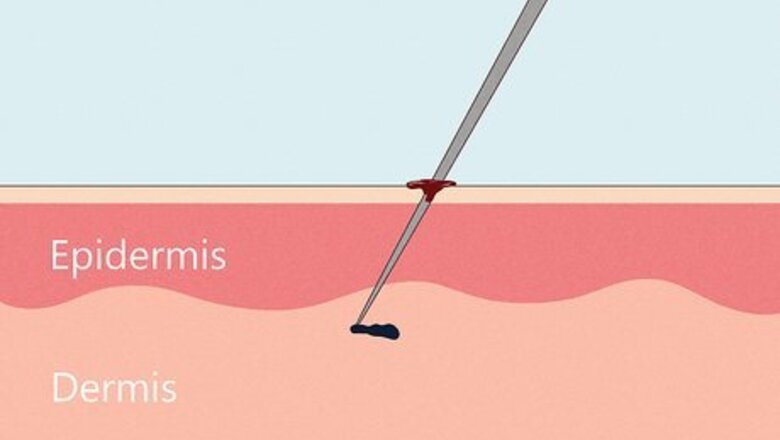
views
- It’s normal for a tattoo to bleed while you’re getting it. A healing tattoo may bleed or ooze a little for 1-3 days after you get it.
- So long as the amount of blood and the amount of pain diminishes every day, it’s healing as normal.
- If you see any signs of infection, see a doctor immediately.
Is it normal to bleed while getting a tattoo?
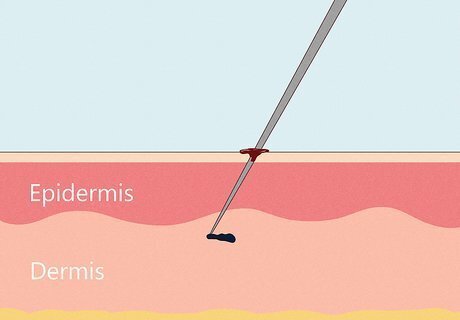
Yes, tattoos are basically wounds, so bleeding is 100% normal. When you’re getting a tattoo, a needle is repeatedly entering your skin to insert ink in the lower level of the epidermis. It’s a lot of friction and scratching for your skin to deal with. As a result, you’ll experience some bleeding. This is completely normal and it’s not anything to be worried about. This is why tattoo artists will wipe the skin repeatedly with soapy water and a clean cloth. They’re wiping the blood away (alongside the plasma and ink) so they can see what they’re doing. Everybody is different. Some people tend to bleed a lot when they’re getting tattooed and some people bleed very little. Some of the stuff leaking from your skin is plasma. It’s the liquid stuff in your blood that’s packed with hormones and nutrients. This is why artists won’t tattoo people under the influence of alcohol. The alcohol thins your blood out which means you bleed way more than you otherwise would.
Is it normal to bleed after getting a tattoo?
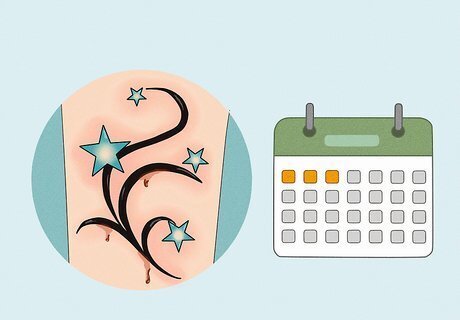
Yes, it’s common to see a little blood for the first 24-72 hours. In the 1-3 days after you’ve gotten a tattoo, your body is doing a lot of healing. During that initial healing stage, it’s normal for a little bit of blood and plasma to ooze out of your skin. This process is called weeping and so long as you see a little less blood each day, you’re fine. Some people won’t bleed after getting a tattoo. This is also pretty common, so don’t freak out if you aren’t bleeding at all. If you are actively bleeding, you may want to avoid heavy drinking, which can potentially prolong the bleeding process. It’s going to take anywhere from 4-8 weeks for your tattoo to completely heal. The bleeding should stop after a few days, though. If the bleeding won’t stop or you bleed more with each passing day, contact a doctor. If your tattoo artist covered the tattoo in Sandiderm, it’s normal for it to fill up with a little bit of liquid (this is plasma and blood mixing together). If it puffs up and gets hard though, call your tattoo artist.
Normal Reactions to a Tattoo
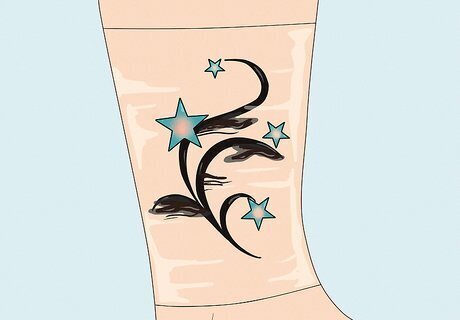
Excess ink may bleed out for a few days. Good tattoo artists will use enough ink to ensure that their lines are clean and solid. This does mean that they often use a little bit too much ink. This is all by design, though. In the days after getting your tattoo, it’s normal for some of the ink to flake off or “leak” away when you wash the tattoo. Don’t worry! This will stop in a few days as your skin fully closes up. If you have a larger tattoo with a lot of densely packed ink, the ink may continue to flake off for a week or two after getting the tattoo. The overall healing time will differ from person to person, and the size/complexity of the piece influences the healing time dramatically. Your tattoo may 100% heal after a few weeks, or it could take up to 6 months.
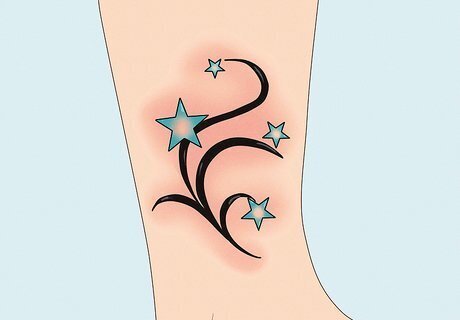
You’ll likely have some redness as the skin begins to heal. It’s typical for the skin around the tattoo to be extremely red and tender after you’ve gotten your tattoo. This redness should dissipate slowly over the next few days as the tattoo heals and the skin irritation goes away. You may also get some inflammation and notice the red skin puffing up a little bit. This is also normal so long as the skin isn’t deformed and the inflammation goes away over time. The redness may take more than 3-4 days to go away if the tattoo is on a part of your body that moves or bends a lot (like a knee, elbow, finger, etc.).
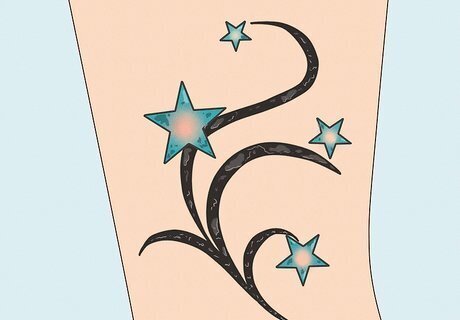
Expect the tattoo to slightly scab over after a few days. Once the bleeding and redness go away, the tattoo will likely crust over into a series of scabs (or a single scab if the tattoo is smaller). This is just your body’s way of healing itself. Scabs protect the skin underneath to keep bacteria out, and since tattoos are just wounds that need to heal, this is perfectly normal. Do not pick at the scab. Let them fall off naturally. It may take weeks (or even months if there’s a lot of heavy ink), but it’s important to let the skin under the scab heal completely. Always follow your tattoo artist’s aftercare instructions! They know your skin best. However, if you’ve ever wondered when it’s time to switch from soap and water to moisturizer, the scabs are a good signal it’s now.

Some people get pimples in response to tattoo ink. Your skin isn’t used to having needles drive ink under the surface of the epidermis, so it’s pretty reasonable if your skin has a reaction. For a lot of people, this comes in the form of pimples, acne, or bumps. This doesn’t mean that anything is wrong—your body is just responding to foreign bodies, and your skin should go back to normal soon. If you do get bumps or pimples, just keep the skin clean and avoid sunlight until the blemishes go away. So long as those bumps and pimples don’t ooze pus or fluid, you don’t need to worry about it. Some tattoo artists note this is more common with colored ink.
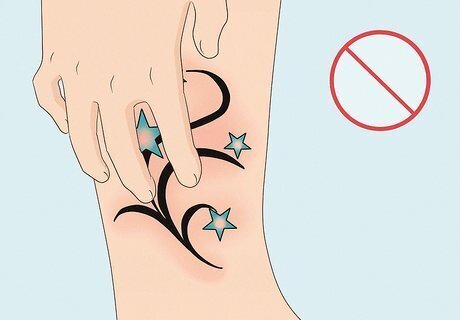
You’re going to get itchy, but don’t give in by scratching. As your skin heals, your tattoo will itch. This will be moderately intense the day or so after getting the ink and will slowly go away over time. After a few weeks, the itchiness should go away entirely. Do not scratch! You may end up distorting the tattoo and extending the time it’ll take for the tattoo to heal. If the itching doesn’t go away after 2-3 weeks, see a dermatologist.
Complications to Look Out For
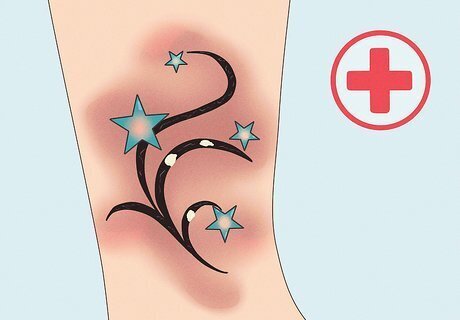
See a doctor ASAP if you see signs of an infection. Infections are rare if you see a reputable tattoo artist using clean tools and following best practices, but infections can happen. As you’re being tattooed, bacteria can enter the wound created by the tattoo needle. If you suspect you have an infection, see a doctor immediately—these infections can be extremely serious if left untreated. Signs of an infection include: Fever, chills, or both Pus coming from the tattoo or pimples on the skin Redness that gets darker or spreads over time Pain that gets worse over time Extreme itching, blisters, crusting skin, or watery fluid leaking from the tattoo

Call your tattoo artist if you’re worried about the healing process. If you’re worried about the way your tattoo is healing, don’t hesitate to contact your artist. They may ask you to come in and take a look at it or have you send a photo from your phone. Your artist will know what a healing tattoo should look like based on the work you’ve received. Don’t feel self-conscious about contacting your artist! This is a big part of their job and they’re trained in what to look for.
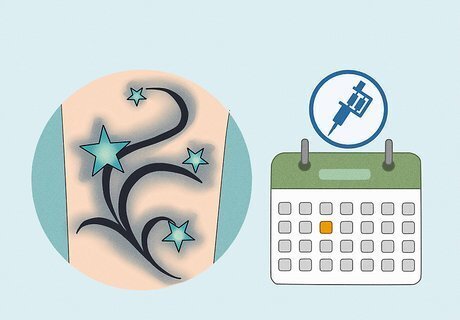
Schedule a follow-up with the artist if you get blowout. Blowout occurs when ink is placed a little too deep into the skin. In the lower layers of the epidermis, the ink will pool up and begin to spread out. This will result in streaks of ink and/or blurry lines. See your artist to see if the blowout can potentially be fixed with some minor adjustments. If the blowout can’t be fixed, you may need to contact a dermatologist who specializes in laser removal. They’ll be able to take the ink out of the areas where it doesn’t belong. Blowout isn’t automatically your tattoo artist’s fault. Some people naturally have very thin upper layers of skin that make avoiding blowout basically impossible.
















Comments
0 comment